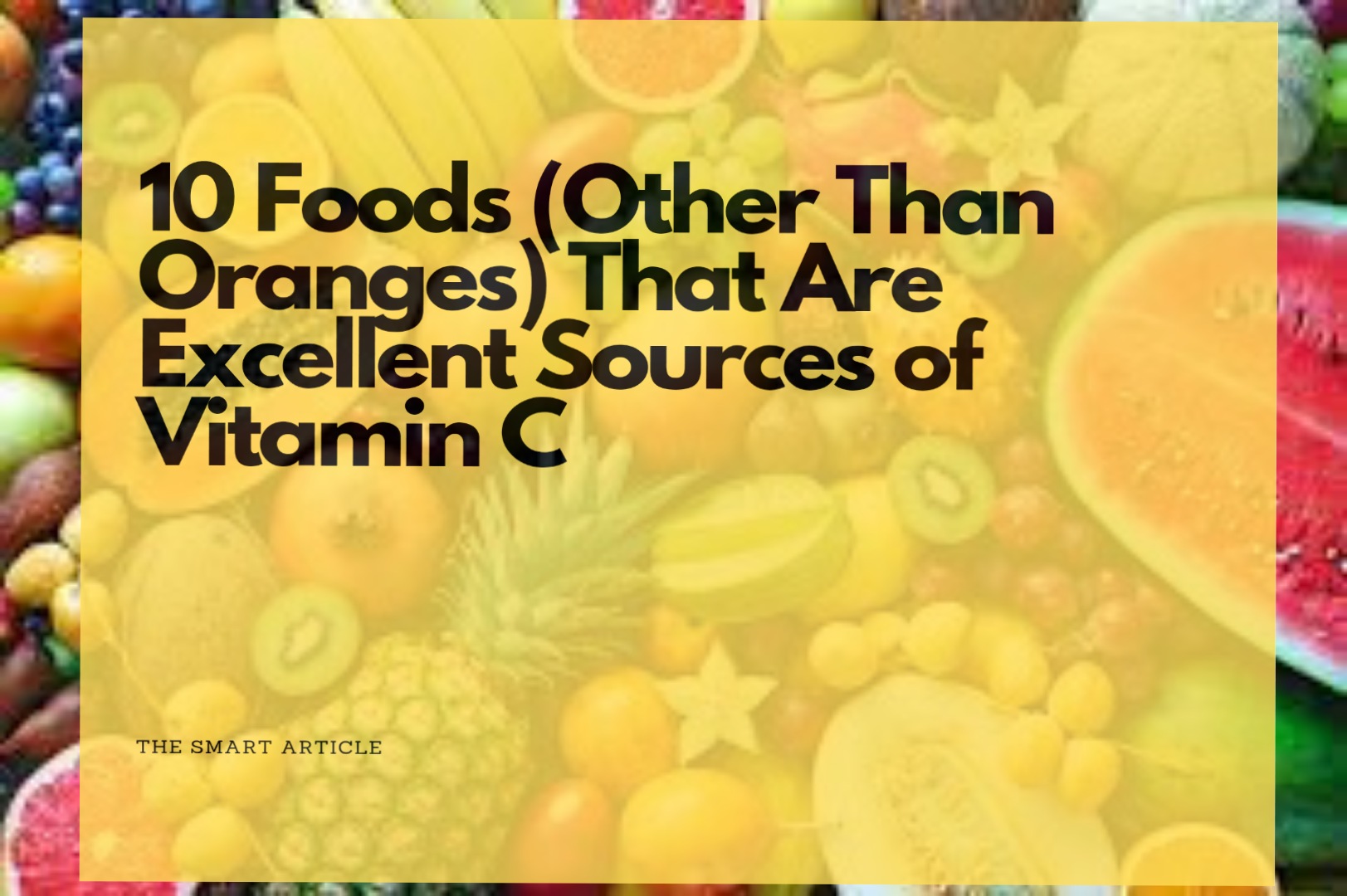10 Foods (Other Than Oranges) That Are Excellent Sources of Vitamin C
Try adding some of these other options for vitamin C to your diet.
100 grams of raw broccoli provide 91.3 milligrams of vitamin C. According to the author of a 2021 Journal of Food and Nutritional Health article, broccoli has also been connected to a variety of other health advantages, including heart and brain health, as well as the prevention of cancer.
The amount of vitamin C in a cup of sliced strawberries is 98 milligrams. Strawberries are a fantastic source of antioxidants and minerals like potassium and calcium, according to a February 2022 article in Scientia Horticulturae.
78.9 milligrams are present in one cup of pineapple, according to the USDA FoodData Central. Other health advantages discovered through research include: According to a June 2021 article in the Journal of Agriculture and Food Research, pineapple contains anti-cancer, anti-diabetes, and anti-hypertension qualities in addition to helping with digestion.
Per 100 grams, kiwi has 74.7 mg of vitamin C, according to USDA FoodData Central. Additionally, a research published in August 2019 in Nutrition and Cancer discovered proof of this fuzzy fruit's direct and indirect anti-cancer properties.
A tropical fruit called guava has 376 mg of vitamin C in every cup. According to a December 2018 Open Access: Toxicology and Research publication, the complete guava plant, from the roots to the leaves, may also be beneficial for ailments like diabetes, blood pressure, and inflammation.
If you want to get a lot of vitamin C, eating an orange is not a bad option. 59.1 milligrams of this vitamin are found in a medium-sized navel orange, according to FoodData Central of the U.S. Department of Agriculture.
That amounts to more than half of the 90 milligrams for adult males and 75 milligrams for adult females that the National Institutes of Health (NIH) recommends as part of a healthy diet.
An essential antioxidant, vitamin C can assist the body ward against a number of illnesses and disorders. According to the NIH, it also aids in increased iron absorption from plant-based meals and contributes to immunological function.
And there is some proof that vitamin C is effective at fighting colds. Although a 2013 meta-analysis published in the Cochrane Database of Systematic Reviews showed no evidence that taking vitamin C supplements regularly can prevent colds, it did find some evidence that doing so may help you feel better more quickly and have milder symptoms.
Many fruits and vegetables have as much vitamin C per serving as an orange, if not more. Consume some of these nutritious foods to receive the benefits of vitamin C.
1. Bell Peppers
Any bell pepper can serve as a fantastic vitamin C source. Orange bell peppers are at the top of the list, according to the USDA FoodData Central, with 158 milligrams of vitamin C per serving. Yellow bell peppers are closely behind with 139 milligrams per 100 grams, while red bell peppers have 142 milligrams. Green bell peppers are the bell peppers with the least vitamin C content, with only 99.5 milligrams, however they do have more vitamin C than an orange.
Bell peppers do have additional advantages as well. According to the NIH, red peppers are a particularly good source of vitamin A, which is crucial for vision. A September 2021 issue of Molecules reported that green bell pepper has a high antioxidant capacity of 78%, indicating that the vegetable has a significant amount of antioxidant chemicals.
2. Broccoli
100 grams of raw broccoli provide 91.3 milligrams of vitamin C. According to the author of a 2021 Journal of Food and Nutritional Health article, broccoli has also been connected to a variety of other health advantages, including heart and brain health, as well as the prevention of cancer.
3. Papaya
This tropical fruit has 88 milligrams of vitamin C per cup. According to a Biology study published in April 2021, papaya may have various advantages besides its vitamin C concentration, including anti-inflammatory, antioxidant, anti-aging, and wound-healing qualities.
4. Strawberries
The amount of vitamin C in a cup of sliced strawberries is 98 milligrams. Strawberries are a fantastic source of antioxidants and minerals like potassium and calcium, according to a February 2022 article in Scientia Horticulturae.
5. Pineapple
78.9 milligrams are present in one cup of pineapple, according to the USDA FoodData Central. Other health advantages discovered through research include: According to a June 2021 article in the Journal of Agriculture and Food Research, pineapple contains anti-cancer, anti-diabetes, and anti-hypertension qualities in addition to helping with digestion.
6. Kiwi
7. Mango
Vitamin C content per fruit is 122 milligrams. Betacarotene and other antioxidants related to eye health are also abundant in mango.
A May 2021 Molecules study found that mangos with more yellow hue contain more carotenoids, which promote eye health, while mangos with more red color have more anti-inflammatory and antioxidant effects.
8. Kale
You should include kale in your diet if you want to get enough vitamin C, as it has 93.4 milligrams per cup.
According to the authors of a Nutrients paper released in January 2022, kale contains potassium, fiber, vitamins A and K, and sodium. The USDA FoodData Central reports that 89.6 grams of raw kale contain 89.6 grams of water, making it another excellent source of water.
9. Guava
10. Hot Chili Peppers
According to USDA FoodData Central, red chili peppers provide 144 milligrams of vitamin C per 100 grams, while green chili peppers have 242 milligrams. Raw green and red chili peppers are also excellent sources of vitamin C.
According to the authors of a MOJ Food Processing & Technology review from July 2018, chili peppers also contain minerals including magnesium, iron, and calcium as well as other vitamins like vitamin A, E, and B.

.jpg)
.jpg)
.jpg)
.jpg)
.jpg)
.jpg)
.jpg)
.jpg)
.jpg)
.jpg)
Posting Komentar untuk "10 Foods (Other Than Oranges) That Are Excellent Sources of Vitamin C"